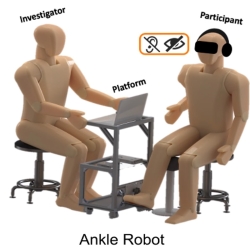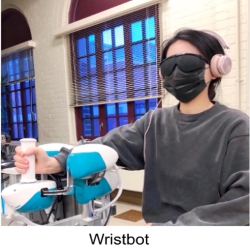A substantial number of people with stroke present with proprioceptive deficits. That is, they show signs of impaired body awareness. Such compromised proprioceptive function leads to deficits in motor performance, such as poor balance control. This study seeks to understand the extent of proprioceptive impairment in the upper and lower limbs in individuals with stroke by evaluating ankle and wrist joint proprioceptive acuity using two robotic devices.


The ankle robot was designed and developed by Qiyin Huang in collaboration with engineers from Shenzhen Key Laboratory of Smart Healthcare Engineering in China. Here is the link for more specific information about the ankle robot. Qiyin's work is partially supported through the University of Minnesota 2022-2023 doctoral dissertation fellowship. Research and development of the wristbot has been supported by National Science Foundation award IIP-1919036 to Jürgen Konczak
The lead investigator and primary contact of this project is Qiyin Huang ([email protected]). Jürgen Konczak is the PI of this study. Engineering support for the ankle robot comes from our collaborators at Shenzhen Key Laboratory of Smart Healthcare Engineering (Mingming Zhang), University of Science and Technology in Shenzhen, China. Naveen Elangovan from HSCL and Bin Zhong from SUSTech complement the team.


Related Publications:
The feasibility of a robotic device to objectively measure ankle joint proprioception. . Huang, Q., Zhong, B., Naveen, E., Zhang, M., & Konczak, J. (2021, April) Frontiers in Biomedical Devices 84812, V001T12A015